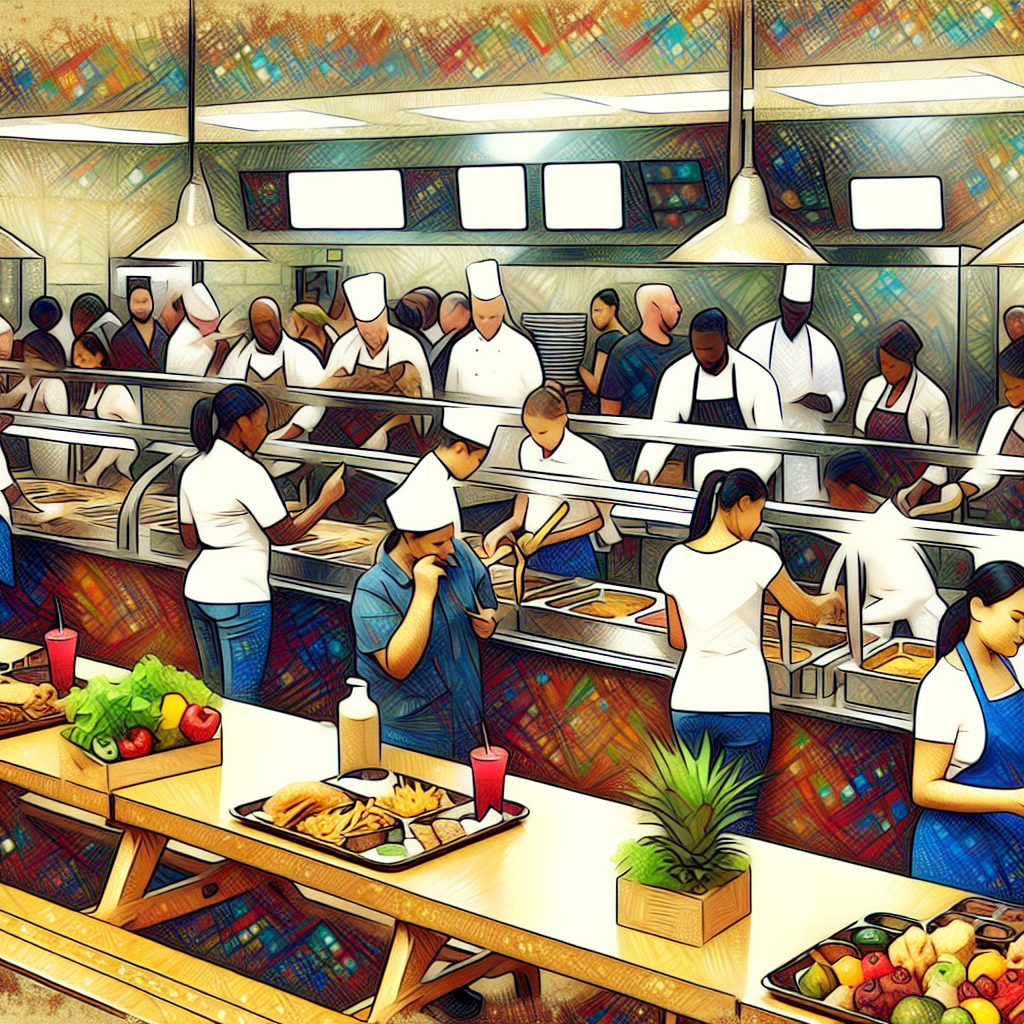The Role of Blockchain in Foodservice Supply Chain Transparency
Blockchain technology has been making waves in various industries, and the foodservice sector is no exception. In recent years, there has been a growing interest in utilizing blockchain to enhance supply chain transparency in the foodservice industry. This report will delve into the significance of blockchain technology in improving transparency in the foodservice supply chain and its potential impact on the industry.
The Current State of the Foodservice Industry
Before we delve into the role of blockchain in supply chain transparency, it’s essential to understand the current state of the foodservice industry. The foodservice industry encompasses a wide range of businesses, including restaurants, catering services, food trucks, and more. In 2025, the foodservice industry is experiencing significant growth, with consumers increasingly turning to dining out or ordering food delivery.
According to the latest industry reports, the global foodservice market is projected to reach $4.2 trillion by 2025, with a compound annual growth rate of 4.3%. The industry is highly competitive, with players constantly striving to differentiate themselves through innovative menus, quality ingredients, and superior customer service.
The Need for Transparency in the Foodservice Supply Chain
Transparency in the foodservice supply chain is crucial for several reasons. Firstly, consumers are increasingly demanding more information about the origin of the food they consume. With growing concerns about food safety, sustainability, and ethical sourcing, consumers want to know where their food comes from and how it was produced.
Secondly, supply chain transparency is essential for foodservice businesses to ensure the quality and safety of their products. By tracking the movement of ingredients from farm to table, restaurants can identify and address any potential issues that may arise, such as food contamination or spoilage.
Challenges in Achieving Transparency in the Foodservice Supply Chain
Despite the importance of transparency in the foodservice supply chain, there are several challenges that businesses face in achieving this goal. One of the main challenges is the complexity of the supply chain, with multiple players involved in the production, distribution, and delivery of food products.
Another challenge is the lack of standardized data-sharing protocols among supply chain partners. Without a common system for sharing information, it can be challenging to track the movement of ingredients accurately and efficiently.
The Role of Blockchain in Enhancing Supply Chain Transparency
Blockchain technology has emerged as a promising solution to address the challenges of supply chain transparency in the foodservice industry. Blockchain is a distributed ledger technology that enables secure, transparent, and immutable record-keeping of transactions.
By leveraging blockchain technology, foodservice businesses can create a transparent and traceable supply chain that provides real-time visibility into the movement of ingredients from farm to table. Each transaction recorded on the blockchain is cryptographically secured, making it tamper-proof and verifiable by all parties involved.
Benefits of Blockchain in Foodservice Supply Chain Transparency
There are several benefits of using blockchain technology to enhance transparency in the foodservice supply chain. One of the key benefits is improved traceability, allowing businesses to track the origin of ingredients, verify their authenticity, and ensure compliance with regulatory requirements.
Blockchain also enhances food safety by enabling faster and more accurate recall processes in the event of a foodborne illness outbreak or contamination. With blockchain, businesses can quickly identify the source of the issue and take appropriate action to mitigate the risk to consumers.
Furthermore, blockchain technology can help reduce food waste by providing real-time visibility into inventory levels and expiration dates. By optimizing inventory management, businesses can minimize waste and improve operational efficiency.
Case Study: Walmart and IBM’s Blockchain Pilot
One notable example of blockchain technology being used to enhance transparency in the foodservice supply chain is Walmart’s partnership with IBM. In 2018, Walmart and IBM launched a blockchain pilot project to track the movement of mangoes from farm to store in the United States.
Through the use of blockchain technology, Walmart was able to reduce the time it took to trace the origin of mangoes from seven days to just 2.2 seconds. This improved traceability not only enhanced food safety but also increased consumer confidence in the quality of the products.
Future Implications of Blockchain in the Foodservice Industry
As blockchain technology continues to evolve, its impact on the foodservice industry is expected to grow significantly. In the coming years, we can expect to see more foodservice businesses adopting blockchain solutions to enhance supply chain transparency, improve food safety, and reduce waste.
Additionally, regulators are increasingly recognizing the potential of blockchain technology to improve traceability and accountability in the food supply chain. As a result, we may see the implementation of blockchain-based systems becoming a standard practice in the foodservice industry to ensure compliance with food safety regulations.
In conclusion, blockchain technology has the potential to revolutionize the foodservice industry by enhancing transparency in the supply chain. By leveraging blockchain solutions, foodservice businesses can improve traceability, ensure food safety, and reduce waste, ultimately benefiting both businesses and consumers alike.



